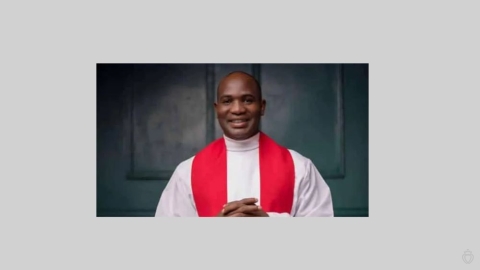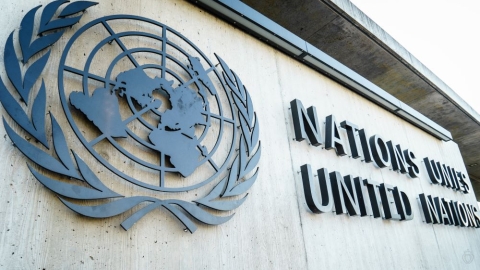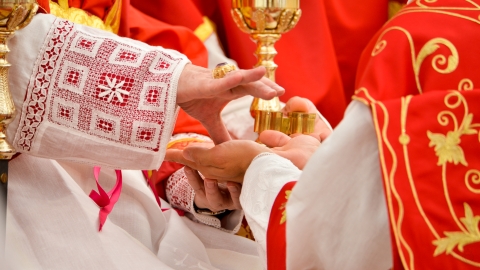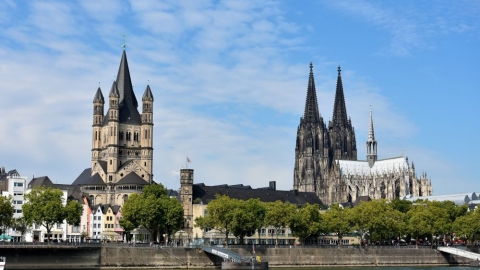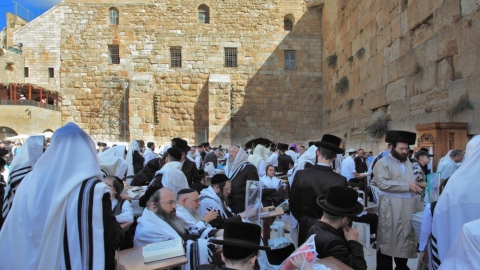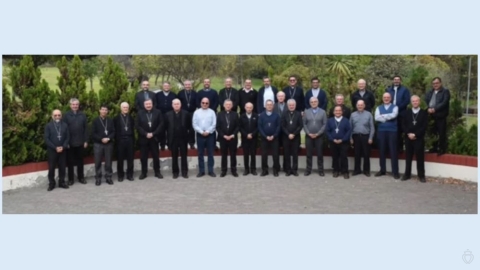China-Vatican: The Strange Desire of the Holy See to be Fooled (1)
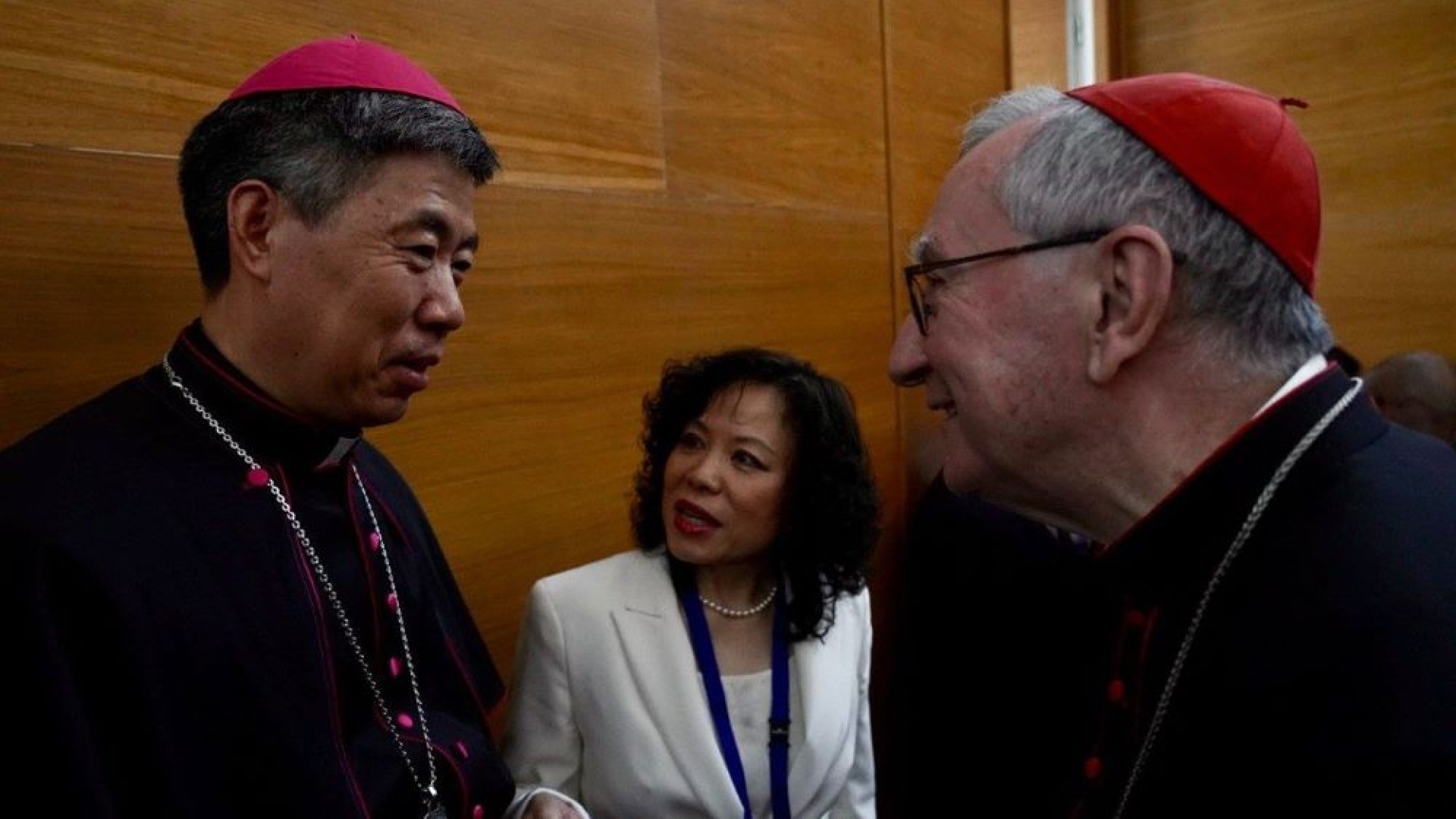
Bishop Joseph Shen Bin with Cardinal Pietro Parolin
The FSSPX.News website has already reported on the conference held at the Pontifical Urban University on May 21, 2024, on the centenary of the first Council of the Chinese Catholic Church, which permitted the senior officials of the Holy See--Cardinal Pietro Parolin in particular--to meet with hand-picked Chinese envoys.
The conference had an obvious diplomatic goal: to strengthen ties between the Holy See and Beijing in anticipation of the renewal of the Sino-Vatican agreement in October, a renewal which could be decisive, according to Fr. Gianni Criveller, and perhaps--this is what the Cardinal Secretary of State suggested--establishing a stable structure, such as a liaison office, between the Vatican and China.
Another conference was held the day before at the Catholic University of the Sacred Heart in Milan, under the title “The Church in China between local establishment and universality,” with a much more marked university program. A third conference will take place at the end of June in Macao, in Chinese territory, according to Asianews.
What is most upsetting in this affair is noting the blindness of Vatican diplomacy, which translates into the strange desire to allow itself to be fooled. Because it seems difficult to use the word naivete for the oldest diplomacy in the world.
But reading the more or less official reports, published notably on the Vatican News site, and provided that one knows the subject sufficiently, it is indeed the dominant feeling that emerges: a more or less voluntary blindness. It is easy to prove this by examining on one hand the interventions on the Chinese side, and on the other hand the interventions of the staff of the Holy See.
Although in an unassuming way and in different terms, it is almost the same thing that Fr. Criveller says in his commentary on the two conferences published in the “Red Lanterns” newsletter on the site Asianews website when he asserts: “the fundamental problem of the Church in China today is her freedom.”
Related Article:
The Intervention of the Bishop of Shanghai
The Repetition of a Well-Learned Lesson
In Rome, Bishop Shen Bin was present. This bishop was appointed to the Diocese of Shanghai on April 4, 2023, without consultation with Rome, thus violating the Sino-Vatican agreement. The nomination had been made by the Chinese Catholic Bishops’ Group and the Chinese Catholic Patriotic Association (CPA), both under the control of the Chinese Communist Party (CCP).
Michael Haynes reports on his blog Per Mariam that Bishop Shen Bin stated, upon his installation, that he would promote “the principle of independence and self-administration” and that he was committed to “Sinicize” Chinese Catholicism. Rome finished by giving way and confirming the appointment. His conference is interesting in more than one way. It was published by Agenzia Fides.
There is a text that can be found on the Chinese government website [1] called “Overview of Religion in China” and which comes from the Religious Affairs Bureau of the CCP. It paints a picture of religions in China and of their recent evolution--from the second half of the 19th century to today--and gives the legal framework within which they can evolve in the country.
It is remarkable that several ideas of this document are disseminated in the intervention of Bishop Shen Bin. Thus the document makes a violent attack against the “imperialist forces” and Christian religions--Catholicism and Protestantism--which collaborated with them to impose “unequal treaties,” belonging to “colonialism,” and thus interfere in Chinese “affairs.”
Unsurprisingly, the Bishop of Shanghai takes up the “unequal treaties” in order to attack the conduct of Catholic missionaries. He also cannot help but talk of interference in Chinese affairs and the “colonial mentality” of the missionaries, as well as “cultural colonization.”
The government still speaks of the “subordination” of the Chinese Church regarding Western missions and the “powerlessness” of the Chinese clergy, pastoral staff, and faithful. It even goes so far as to give figures for the small number of Chinese bishops and archbishops compared to foreign clergy at the time of the popular revolution.
A diligent student, Bishop Shen Bin speaks of “discrimination against indigenous clergy” and repeats, nearly identically, the figures of the CCP document! He concludes with this point: “The Catholic Church in China had not truly freed itself from foreign powers to become a work led by Chinese Christians and had not yet succeeded in relieving itself of the label of ‘foreign religion’.”
He elaborates further: “Especially after the opium war, some missionaries had a strong sense of European cultural superiority and even intended to use the Christian religion to change Chinese society and culture, to which many Chinese were inevitably opposed and which they even hated.”
This point seeks to explain why “the Catholic community created its own patriotic organization.” The CCP would then have specified that contacts of Chinese Catholics with Rome were only authorized on the condition that they do not go against the interests of the Chinese people, that they did not violate the sovereignty of China, and that the Vatican modifies its policy of hostility toward China.
This story of the founding of the CPA only relates the fable invented and spread by the Chinese government, which is detailed in the cited document: it is Chinese Catholics who took the initiative, and the CCP only supported and helped them. An article published on the Paris Foreign Missions (MEP) website in 2010 debunks this claim.
In its conclusion, the MEP article states: “The patriotic associations were not organizations born spontaneously, as the White Paper wants people to believe. [2] They are instruments of the Party and are an integral part of the United Front. [3] The Patriotic Association is quite independent from Rome, but not from the Party.” The MEP website published articles on this foundation in order to reveal this lie.
The Future of Sinicization
Bishop Shen Bin, who is the Vice President of the CPA--a structure dependent on the Party, let’s not forget--insists on “Sinicization.” In the third part of his conference he explains that “the Chinese people are experiencing the great rebirth of the Chinese nation with modernization in the Chinese style, and the Church in China must go in the same direction, by following a path of Sinicization in line with today’s Chinese culture and society.”
To do this, “the excellent traditional Chinese culture” must be used--a government slogan. And to detail in the 4th part: the Church in China must be encouraged “to use traditional Chinese culture in the expression of the Catholic Faith; [...] to promote the Sinicization of church art; to integrate elements of traditional Chinese culture in the liturgy.”
The journal La Croix cites reactions from listeners who “did not hide their skepticism after hearing a speech which seemed to them very close to the party line. ‘The Bishop should have been a little more open than that,’ explained an excellent expert on the matter.” These listeners remain polite: in fact they heard, in the Vatican itself, a pro-CCP propaganda speech.
[1] https:// »www.gov.cn/guoqing/2005-06/22/content_2582714.htm
[2] White Paper of Religious Freedom: Freedom of Religion Guaranteed, Religious Rights Protected, published by the Information Office of the State Council of the People’s Republic of China on October 16, 1977.
[3] The United Front is a Party organization composed of a group of people from diverse backgrounds, convinced to support socialist modernization. Its slogan is: “Seeking unity while maintaining differences.”
(Sources : Agence Fides/Per Mariam/La Croix/gov.cn/Asianews/MEP – FSSPX.Actualités)
Illustration : © Vatican News
